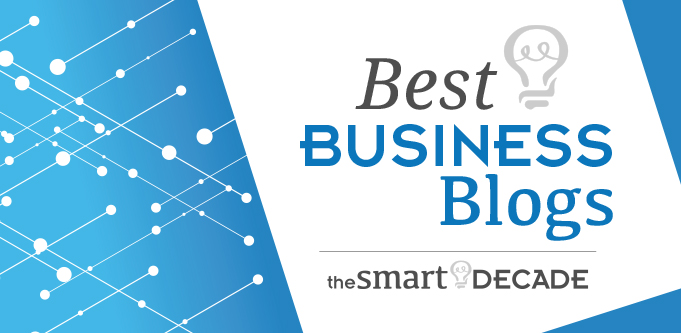Whoa! These guys built a great agentic browser!
Transcript
Agentic Browsers Are Here: What “Flow” Means for E-commerce, Ads, and the Next Wave of Shopping
If the last wave of AI helped write product pages, the next wave will shop for your customers. Agentic browsers—AI that can browse, research, compare, and take actions on the web—are moving from novelty to utility. After a disappointing run with OpenAI’s Atlas, a newer experience called Flow shows how this will reshape e-commerce, social, and the way revenue arrives at your store.
From “smart search” to “do it for me”
Agentic browsers don’t just surface links. They:
- Understand a brief (“find the highest-quality supplement for my condition; prefer free delivery”)
- Research options across sites
- Choose a supplier
- Add the product to cart
- Tee up checkout—or even schedule repeat tasks
That’s no longer theoretical. In testing, Flow researched a niche supplement, chose a retailer, and placed items directly in the cart. A site-level bot-check gate appeared (press and hold to confirm you’re human), but the cart was already populated. No card details were handed over and no access granted to Gmail or Google accounts—proof that useful automation can happen without deep account permissions.
Social on autopilot (with a caveat)
Flow was also asked to research news relevant to an audience, write a post, and publish it to Twitter/X. Within minutes, a live post appeared. This unlocks real use for brand accounts:
- Curate customer-relevant updates
- Turn internal work (Slack threads, ClickUp case studies) into shareable posts
- Keep evergreen campaigns alive without daily manual effort
However, authenticity matters. For personal profiles, automation can create bland noise. Genuine, human perspective still sets leaders apart—save the robots for brand feeds and utility posting.
No, this isn’t “the end of agencies”
Every new tool invites doomsaying. In practice, agentic browsers expand output. Agencies and in-house teams will use them to:
- Multiply research, product sourcing, and content atomisation
- Reduce the “ops tax” on social and merchandising
- Build persistent workflows that run in the background
Expect big platforms to respond. A Chrome-level agentic project from Google is a logical next step. Anything that shortens the funnel—better search → faster carts → more repeat orders—benefits users and advertisers. Happier shoppers click more ads. Advertisers pay more when ROAS lifts. The flywheel turns.
Fundamentals still win—at a bigger scale
There are endless tips and tricks, but the basics haven’t changed:
- Clear positioning and trust signals
- Fast pages and simple UX
- Frictionless carts and strong offer design
- A list you own (email/SMS) to convert and re-convert
What is changing: the ability to scale tasks you already know work. Clients are embedding AI in back-office processes and seeing compounding gains.
Here’s a striking data point: in one account, ChatGPT-driven revenue (not traffic—revenue) is already higher than Bing organic + Bing paid combined, and higher than all Meta revenue. The site didn’t rely on tricks—just three years of consistent best practice. Distribution is shifting. Be ready.
Memory, workflows, and the rise of bot-buyers
Flow supports memory and workflows. That means:
- It remembers purchases (“Reorder that methyl folate”) and rebuilds the cart instantly
- It can run scheduled jobs (curate news, post updates, refresh pricing, check stock)
Project this forward and expect more bots filling carts before humans review and complete checkout. Traffic patterns will evolve; fewer traditional product-listing pageviews, more direct cart sessions, more branded/autofill behaviour. Conversion audits and analytics will need to adapt.
Security: prompt injections are real
Agentic browsing increases the attack surface. Prompt injections can be hidden in page content—even inside images. That doesn’t make agentic tools unsafe by default, but it does demand new hygiene:
- Browse defensively and verify target sites
- Review what an agent is allowed to click or submit
- Keep an audit trail of agent actions
- Treat unknown “helpful” pages with caution
Move deliberately. Nothing is foolproof, but informed use beats sitting on the sidelines.
Action plan for e-commerce teams
- Get hands-on with an agentic browser
Replicate a real purchase journey (gift, refill, bundle) and document where the agent stalls—login walls, shipping calculators, variant selectors. - Harden the purchase path
- Ensure bots (good ones) can select variants, calculate shipping, and add to cart
- Simplify bot-checks that block legitimate flows (time-press gates, overly aggressive scripts)
- Optimise for agent memory
- Make product names and variants unambiguous
- Expose structured data (schema) for price, availability, shipping, and returns
- Keep canonical URLs clean and stable
- Instrument analytics for agent traffic
- Tag and segment suspected agent sessions (cart-first, ultra-low scroll, API-like cadence)
- Watch for a growing share of “returning cart” and “direct to checkout” patterns
- Automate brand social (not your personal brand)
- Pipe internal wins (case studies, Slack highlights, ClickUp notes) into scheduled brand posts
- Set guardrails: tone, sources list, approval for sensitive topics
- Double down on owned audience
- Offer list-worthy value (refill reminders, insider bundles, early drops)
- Build flows for re-orders that agents can trigger (“reorder + upsell”)
- Monitor and manage bots hitting your site
- Identify AI training and scraping bots; throttle or block where appropriate
- Allowlist helpful agents you want to assist buyers
What to expect next
As agentic browsers mature, the journey compresses: “Find → Compare → Cart” happens in seconds, not minutes. Beta tools are already this capable; production-grade experiences will only get smoother. The stores that win will be the ones that:
- Welcome agents with clean data and clear paths
- Preserve trust and safety
- Nurture direct relationships so re-orders are one prompt away
Final thought
Agentic browsers aren’t a fad. They’re a new customer type—one that remembers, compares, and acts. Build for them now and you won’t just protect your current conversions—you’ll open a new channel of revenue that compounds.
Want help making your store agent-ready—without breaking your current funnel? Get a quick “Agentic Readiness” audit covering schema, cart flow, analytics tagging, and bot policy. You’ll get a prioritised, 30-day implementation plan and the exact checkpoints to measure revenue lift. For more information click here. If you have any questions or comments, or just want to reach out for a chat, contact Jim Stewart at [email protected].

Jim’s been here for a while, you know who he is.


